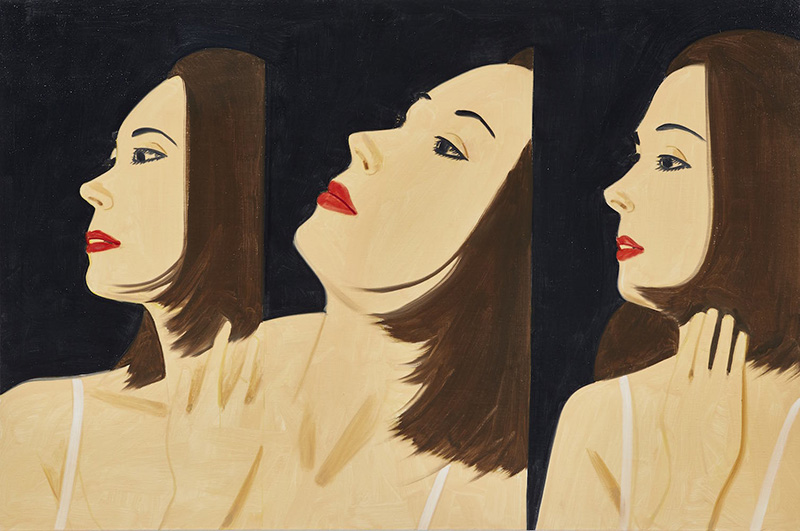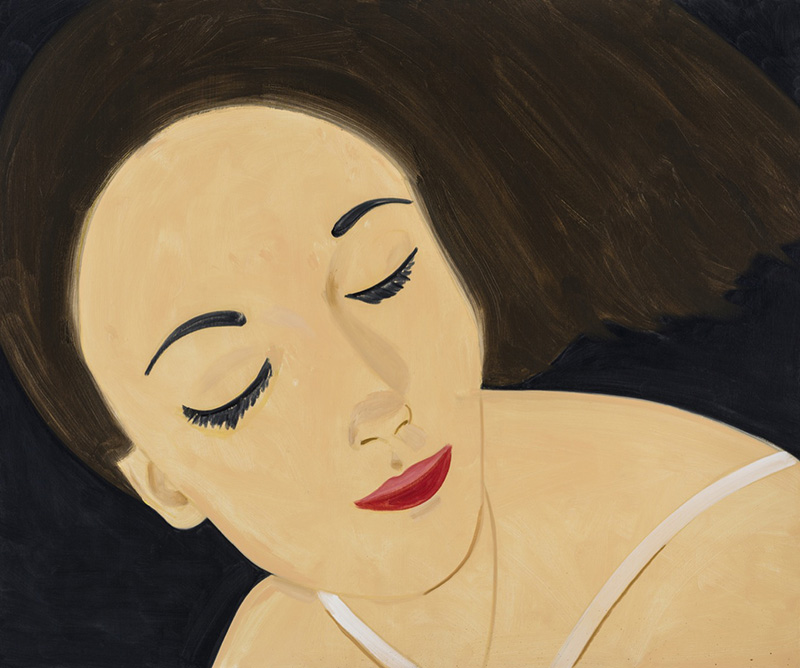ART CITIES:Salzburg-Alex Katz
 Alex Katz’s portraits feature his own social milieu: friends, fellow artists, and most notably his wife Ada, whom he has painted more than 200 times. The artist’s quest to represent the experience of spectatorship is reflected in his portraits, also in his large landscapes, which he characterizes as “environmental”. In his continued experimentation with different media, the artist creates what he calls “cut-outs”, freestanding sculptures that blur the line between painting and object.
Alex Katz’s portraits feature his own social milieu: friends, fellow artists, and most notably his wife Ada, whom he has painted more than 200 times. The artist’s quest to represent the experience of spectatorship is reflected in his portraits, also in his large landscapes, which he characterizes as “environmental”. In his continued experimentation with different media, the artist creates what he calls “cut-outs”, freestanding sculptures that blur the line between painting and object.
By Dimitris Lempesis
Photo: Galerie Thaddaeus Ropac Archive
Alex Katz presents a new series of paintings in his solo exhibition “Dancers” at Galerie Thaddaeus Ropac. In the 1950s, when Abstract Expressionism was still in vogue, Alex Katz broke irreverently away from the brushstrokes of Pollock and de Kooning to begin painting in his signature style of bold, stylized close-ups of elegant figures assembled from intersecting planes of saturated color. In the 1960s Katz began to create large-format paintings in his signature flat style, depicting figures set against abstracted landscapes or monochrome backgrounds, he also collaborated for the first time with a dance ensemble, creating for the legendary Paul Taylor Dance Company stage-sets and portraits of dancers and dance formations steeped. Over the years, Katz repeatedly returned to the theme of dance and dancers. As the size of his canvases increased, so too did the complexity of his compositions: while his first paintings had depicted individuals alone or in pairs, he now began to create elaborate scenes with large groups of people, or the same subject portrayed several times. In this new series “Dancers”, he portrays the New York dancer Laura. In contrast to his previous series of dancers, here he concentrates solely on her face and her expressions as she dances. Only suggestions of her shoulders and her neck, stretched or turned to the side, give an idea of the motion of her body. Through the multiplication of the figure in works such as: “Laura 2” and “Laura 8” (both 2017), the dancer’s movements become clear, by a series of consecutive snapshots of Laura in different poses, suggests motion sequences to the viewer but also acts as a substitute for three-dimensionality. The pictures are rendered dynamic through perspective distortion or a mainly diagonal and horizontal alignment of the compositions. Laura’s dark hair merges into the black background, so that the contrast makes the dancer appear illuminated by a spotlight.
Info: Galerie Thaddaeus Ropac, Villa Kast, Mirabellplatz 2, Salzburg, Duration: 25/11/17-20/1/18, Days & Hours: Tue-Fri 10:00-18:00, Sat 10:00-14:00, http://ropac.net


